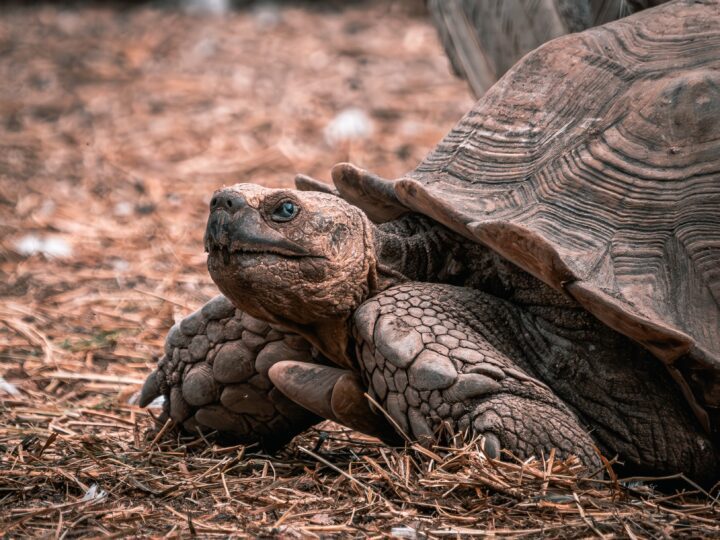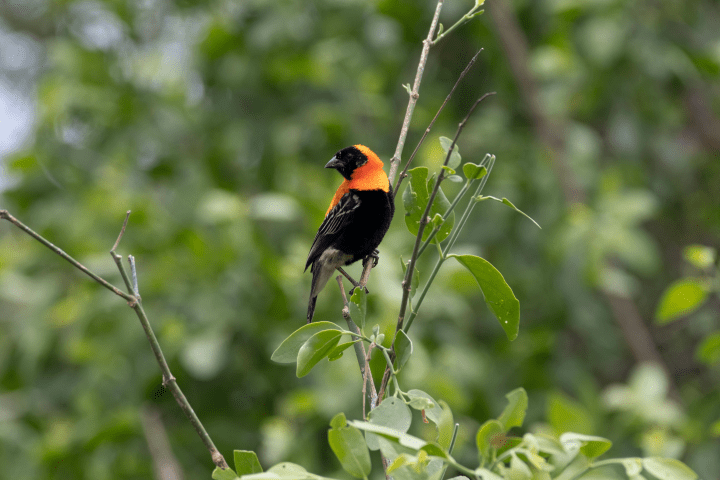Larvae of bagworm moths protect themselves from being crushed by building spiral-patterned cases out of environmental materials such as twigs, leaves, and silk.
Physically Assemble Structure
Living systems use physical materials to create structures to serve as protection, insulation, and other purposes. These structures can be internal (within or attached to the system itself), such as cell membranes, shells, and fur. They can also be external (detached), such as nests, burrows, cocoons, or webs. Because physical materials are limited and the energy required to gather and create new structures is costly, living systems must use both conservatively. Therefore, they optimize the structures’ size, weight, and density. For example, weaver birds use two types of vegetation to create their nests: strong, a few stiff fibers and numerous thin fibers. Combined, they make a strong, yet flexible, nest. An example of an internal structure is a bird’s bone. The bone is comprised of a mineral matrix assembled to create strong cross-supports and a tubular outer surface filled with air to minimize weight.
Prevent Buckling
When a living system undergoes compression to the extent that it causes structural damage, it results in buckling. For example, if a person pushes down on the top or the side of a paper cup, the cup’s wall will eventually give way, or buckle. Although a living system could add material to strengthen a structure, this requires expending precious energy. Instead, it must use energy and materials conservatively to avoid buckling, strengthening structures through careful placement of materials to resist, absorb, or deflect compressive forces. For example, instead of one long, tubular stem, some plants like bamboo have stronger nodes scattered along their stems. When compressed, these nodes keep the round stems from taking on an oval shape that weakens the structure and could result in buckling.
Manage Impact
An impact is a high force or mechanical shock that happens over a short period of time, such as a hammer hitting a nail rather than a hand pushing slowly against a wall. Because of their speed and force, impacts don’t allow materials to slowly adjust to the force, which can lead to cracks, ruptures, and complete breakage. Therefore, living systems have strategies that can absorb, dissipate, or otherwise survive that force without the need to add large amounts of material. For example, the Toco toucan’s large beak is very lightweight, yet can withstand impacts because it’s made of a composite material with rigid foam inside and layers of a hard, fibrous material outside.
Protect From Animals
Animals–organisms that range from microscopic to larger than a bus–embody a wide variety of harms to living systems, including other animals. They threaten through predation, herbivory, defense, and parasitism, and they compete for resources such as water, nutrients, and space. Any given living organism commonly faces threats from a variety of animals, requiring strategies that effectively defend from each. Trout and other bony fish, for example, escape predators by having scales made of very thin, flake-like pieces of bone covered with slippery mucus. They also have behavioral strategies such as camouflage, fast swimming, and twisting and turning to achieve release from a predator’s grip.

Insects
Class Insecta (“an insect”): Flies, ants, beetles, cockroaches, fleas, dragonflies
Insects are the most abundant arthropods—they make up 90% of the animals in the phylum. They’re found everywhere on earth except the deep ocean, and scientists estimate there are millions of insects not yet described. Most live on land, but many live in freshwater or saltwater marshes for part of their life cycles. Insects have three distinct body sections: a head, which has specialized mouthparts, a thorax, which has jointed legs, and an abdomen. They have well-developed nervous and sensory systems, and are the only invertebrate that can fly, thanks to their lightweight exoskeletons and small size.




